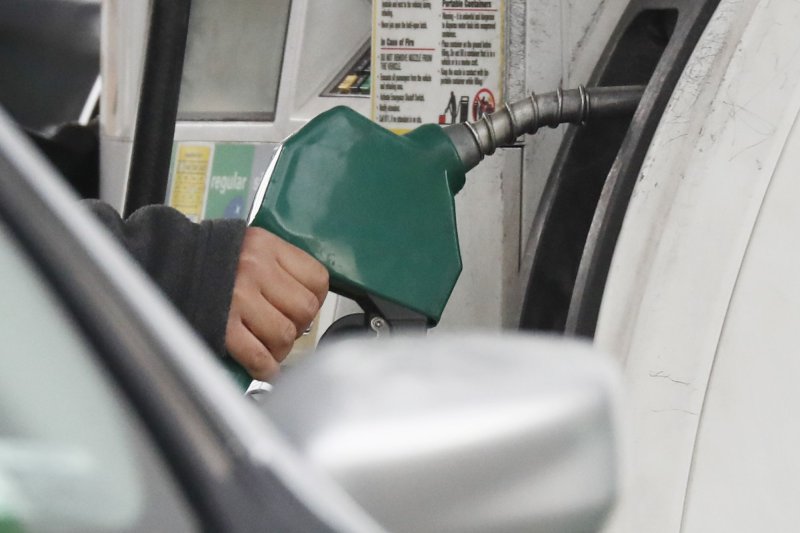1 of 3 | Retail gasoline prices are close to year-ago levels and could start to increase even further as seasonal factors come into play, analysis from GasBuddy finds. Photo by John Angelillo/UPI |
License Photo
Jan. 9 (UPI) -- Retail gasoline prices in the United States on Monday were still above week-ago levels, though a revival in refinery operations should cool the market, a Chicago-based analyst said.
Motor club AAA reported a national average retail price of $3.28 for a gallon of regular unleaded gasoline. That's about 10 cents higher than this time last week, but still slightly below week-ago and year-ago levels of around $3.30 per gallon.
Crude oil prices account for the bulk of what consumers see at the pump and trends there have been volatile. West Texas Intermediate, the U.S. benchmark for the price of oil, has been on a steady decline for the better part of a month, though a rally of around 3% in early-Monday trading was triggered by China relaxing its tight COVID-19 policies.
China is a leading crude oil importer and, as the second-largest economy in the world behind the United States, its appetite has global consequences.
But it was lackluster refinery activity that was to blame for higher gasoline prices in the United States rather than economic developments in China. Federal data for the seven-day period ending Dec. 30 show refineries were operating at about 79% of their peak capacity, gasoline production declined and the amount in storage is 6% below the five-year range for this time of year.
During the seven-day period ending Dec. 2, refineries were operating at about 95.5% of their peak capacity.
Patrick DeHaan, the senior petroleum analyst at GasBuddy, said from Chicago that it's refineries that are to blame for the recent increase in gas prices. The late-December cold snap led to several outages, though those facilities should start coming back online relatively soon."
As long as refiners are able to get back online soon from previous cold-weather outages, we could see supply start to recover at the same time demand is weak, which could bring gas prices down again," he said. "The window of opportunity, however, is shrinking, and by late February or early March, we'll likely kick off the seasonal rise in gasoline prices."
That's because refineries need to start reconfiguring their operations to make the summer-blend of gasoline, which is more expensive to make because of the additional steps needed to keep it from evaporating during warmer weather.
The summer holiday season, which kicks off at the end of the current academic year, should also see a surge in travel demand and push retail gasoline prices closer to the $4 mark.
Gasoline prices topped the $5 mark in June as markets adjusted from the loss of Russian crude oil triggered by Western-backed sanctions. The federal government expects retail gasoline prices to average $3.51 per gallon this year, down from the $3.99 for 2022.















